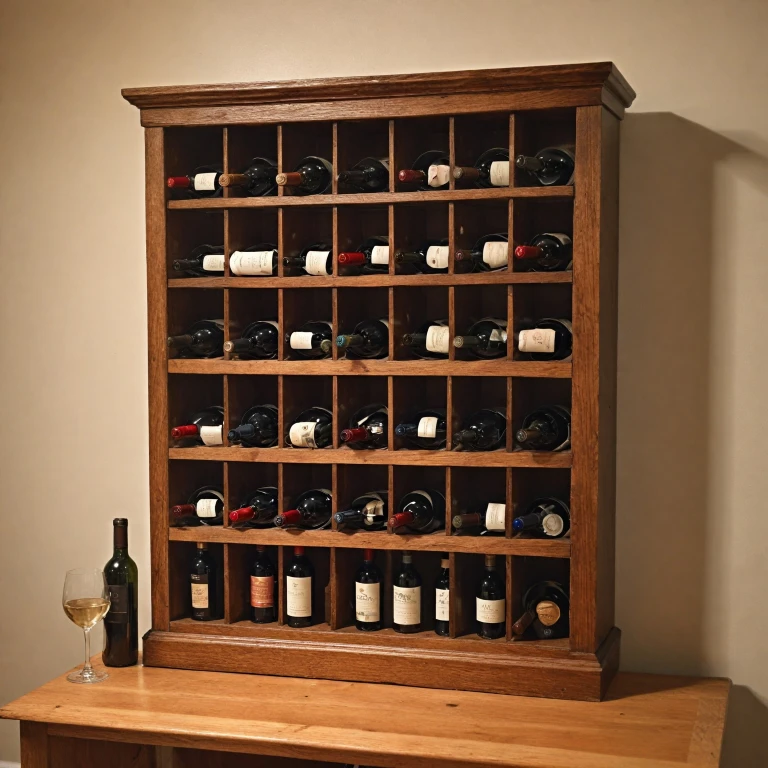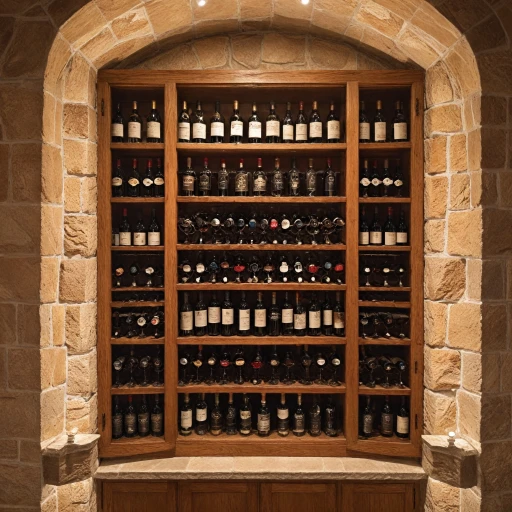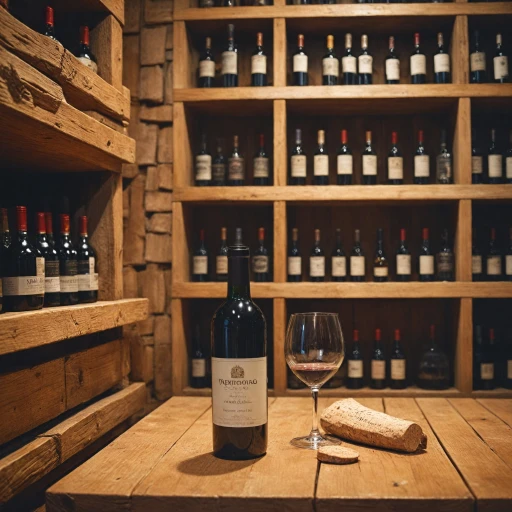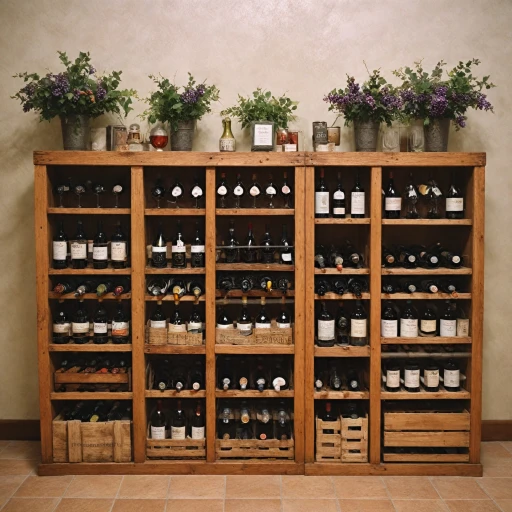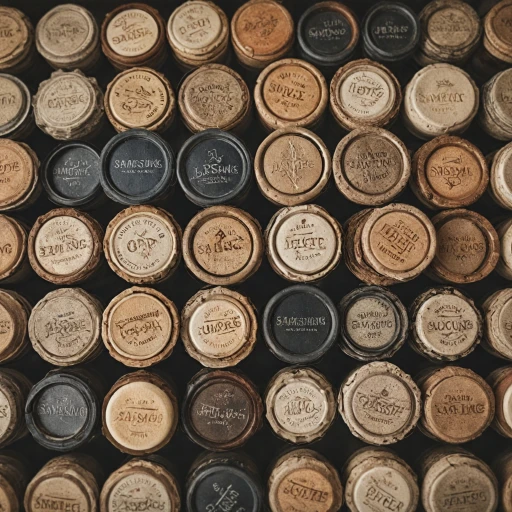Understanding Wine Cubby Dimensions
Defining the Dimensions of Wine Cubbies
Understanding the dimensions of a wine cubby is crucial when you're trying to integrate it into your kitchen or wine cellar. The size and shape of your wine cubby will determine how well it fits into your space and how efficiently it stores your wine bottles. In general, the dimensions are affected by several factors, including bottle size and the type of wine storage you envision. For standard wine bottles, the height, width, and depth of cubbies should be designed to securely hold your collection while fitting seamlessly into existing cabinets or walls. Additionally, the number of bottles you plan to store will influence the overall dimensions of your wine cubby. Whether you're opting for a full wall of racks or a small column in a cabinet, each unit is designed to accommodate a specific bottle capacity. For those looking at metal wine racks or wooden wine cubbies made from materials like white oak, you'll find the dimensions of these products often detailed under product details, facilitating the right choice for your space and budget. Remember, the delivery logistics and unit price might also affect your decision, ensuring you get the most efficient storage solution without exceeding your budget. The choice between standard sizes and custom options will impact how perfectly these racks fit into available spaces, an aspect to explore further. Optimizing your wine rack size makes a significant difference in showcasing and protecting your wine collection, ensuring functionality and aesthetic appeal in your kitchen or cellar.Factors Influencing Wine Cubby Size
Considering Your Wine Collection Needs
When determining the ideal size for your wine cubby, it's essential to assess the various factors that influence your choice. One key consideration is the quantity and variety of wine bottles you plan to store. The typical bottle capacity of a wine rack or cabinet will depend on the number of standard wine bottles and any differing bottle sizes within your collection.
Next, review the available space in your kitchen or designated storage area. This includes measuring wall dimensions and considering whether the wine cubby will be integrated into existing cabinets or its dedicated setup. An accurate sense of the height, width, and depth will aid in making sure your bottles wine fit snugly and securely.
The type of storage you choose, whether a sleek metal wine rack or a classic wooden wine cabinet, affects the ultimate footprint. Each type has its own unit design that could either optimize or limit space. Evaluate how these products align with your aesthetic preferences and practical requirements.
Price and delivery logistics can also play a part. Higher-end wine storage solutions like full wine cellars offer ample room but may come at a steeper unit price than modular racks that fit into smaller, more flexible spaces.
Ultimately, planning your wine cubby size ensures it complements your wine rack goals and seamlessly integrates into your home environment. This will not only enhance your storage but also reflect the personal enjoyment and value you place on your wine collection.
Standard vs. Custom Wine Cubbies
Comparing Standard Wine Cubbies and Custom Options
When deciding on a wine cubby, the choices often boil down to standard sizes versus custom designs. Each option has its own set of advantages, affecting factors like price, delivery time, and overall design flexibility. Understanding these differences can help you make an informed decision to complement your wine collection and storage needs.
Standard Wine Cubbies are pre-manufactured units that cater to common bottle sizes and general kitchen or cabinet dimensions. These are typically more economical in terms of unit price and often boast quicker delivery times. Standard options are designed with typical height and width measurements, making them a convenient choice for those who have specific space constraints or are looking to fill a traditional wine rack space in a wine cellar or cabinet.
Conversely, Custom Wine Cubbies offer greater flexibility in terms of design, allowing you to utilize unique dimensions or incorporate special materials, such as white oak or even metal finishes. They are ideal for wine enthusiasts who need to accommodate a diverse range of bottle sizes or wish to make a statement with their wine storage solution. However, it is important to keep in mind that this option may increase the overall product cost and extend the time frame for delivery.
For those uncertain about which direction to take, consider factors like bottle capacity and the available space within your cabinets or on your walls. A standard cubby may suffice if you have a uniform collection of bottles, but for a bespoke look or unique storage dimensions, custom alternatives could be more suitable. Further insights into making the best choice for your personal and spatial needs can be explored in this detailed guide.
Optimizing Space in Your Wine Cubby
Maximizing the Utility of Your Wine Cubby
When it comes to wine storage, making the best use of your available space is key. The dimensions of your wine cubby should reflect not only your wine collection's current size but also any future expansion plans you may have. Adhering to standard wine cubby dimensions can streamline the optimization process; yet integrating personal nuances can enhance the functionality.
Consider the column-wise arrangement for easy access and efficient storage. By stacking wine bottles vertically, you can save space while maintaining the aesthetic appeal. Opt for wine racks that fit snugly into your kitchen cabinets or against the wall, utilizing unused heights and depths effectively.
Material choice plays a significant role in both design and capacity. Both wooden wine racks and metal wine units have their merits. While wooden options like white oak offer a classic touch to your wine cellar, metal racks often provide increased flexibility and durability. Check the product details and delivery options when purchasing, as this will impact the unit price and the overall suitability for your home.
If you are storing a diverse range of bottle sizes, ensure that your wine cubby design can accommodate different shapes and dimensions. This flexibility enables you to preserve both standard wine bottle heights and larger vintages without needing additional storage products.
Ultimately, the wine racks should fit seamlessly into your overall kitchen or living space without compromising style or function. By wisely choosing the size and layout, your wine cubby will not only enhance the elegance of your home but also ensure your wine bottles are stored in optimal conditions.
Future-Proofing Your Wine Storage
Planning for Future Wine Needs
When considering wine storage, it’s crucial to think about how your collection might grow over time. A wine cubby that fits your current collection may not suffice in the future, especially if you plan to explore different wine types or expand your variety of bottle sizes. Assessing your potential growth will help in choosing a wine rack or cabinet that can accommodate future purchases without the need for immediate upgrades.
Adjustable and Modular Options
To future-proof your wine storage, consider adjustable or modular wine racks. These products offer flexibility by allowing you to modify the dimensions and bottle capacity as your collection evolves. Modular units can be expanded vertically or horizontally, making them ideal for adapting to changes in your wine collection size and available space.
Investing in Quality Materials
The material of your wine cubby plays a significant role in its longevity and ability to protect your wine bottles. Opt for sturdy materials like metal or high-quality wood, such as white oak, which can withstand the test of time. Investing in durable materials ensures that your wine storage remains intact and visually appealing, even as your collection grows.
Considering Environmental Factors
Future-proofing your wine storage also involves considering environmental factors. Ensure that your wine cubby is placed in a location that maintains a consistent temperature and humidity level, which is crucial for preserving the quality of your wine bottles. If your kitchen or wine cellar experiences fluctuations, consider adding insulation or climate control features to your wine storage area.
Thinking Long-Term with Custom Solutions
If you have specific needs or a unique space, custom wine cubbies can offer a long-term solution tailored to your requirements. While they might come at a higher unit price compared to standard options, the ability to customize dimensions and layout ensures that your wine storage fits seamlessly into your home and accommodates your wine collection’s growth.
